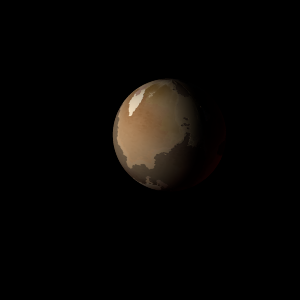|
|
Space Astro
|
Info for exoplanet "Nomia"
| Scientific (actual) data |
|---|
| Name | Kepler-1001 b |
| Planet status | Confirmed |
| Radius | 0.281 |
| Orbital period | 14.3051 |
| Discovered | 2016 |
| Updated | 2021-02-05 |
| Tconj | 2454970 |
| Publication | Announced on a website |
| Detection type | Primary Transit |
| Alternate names | 2MASS J19050572+4837073 b, K01889.01, KIC 11074178 b, KOI-1889 b, KOI-1889.01, WISE J190505.73+483707.2 b |
| Star name | Kepler-1001 |
| Right ascension | 286.27° |
| Declination | 48.62° |
| Mag j | 14.109 |
| Mag h | 13.718 |
| Mag k | 13.662 |
| Star distance | 1009 |
| Star metallicity | -0.03 |
| Star mass | 0.9 |
| Star radius | 0.88 |
| Star age | 4.68 |
| Star temperature | 5491 |
| Star alternate names | 2MASS J19050572+4837073, KIC 11074178, KOI-1889, WISE J190505.73+483707.2 |
| Wikipedia article | Kepler-1001 b |
Back
| |
| Fictional info (?) |
|---|
| Suggested name | Nomia |
| Planet type | Cold planet |
| A prominent result is the "great green spot", a giant storm that is known to have existed for centuries since it was first seen by telescope. |
| Atmosphere | Hydrogen | 68% |
| Carbon monoxide | 31% |
| Hydrogen chloride | 0.21% |
| Carbon dioxide | 0.00084% |
| Atmospheric pressure | 5 bar |
 |
| Moon | Bosanda Naiad | Medium-sized potato shaped rocky moon |
| Teabeb | Medium-sized round gaseous moon |
| Thelvi Al | Very small round oceanic planetoid |
| Logeia Atsete | Large almost round ice moon |
| Sethrymr | Very small round gaseous moon |
| Fari | Very small round oceanic asteroid |
| Pinaidi-mirlis | Huge slightly egg-shaped oceanic moon |
| There'eufar-tania | Medium-sized round gaseous asteroid |
| Lyda'cisco | Large round ice moon |
| Kalirrraq-skoll | Large almost round ice comet |
| Mirardi Ar | Medium-sized potato shaped crater-filled asteroid |
| Voscupro Galadra | Huge round rocky planetoid |
| Mirdyske | Very small round rocky comet |
| Lytotiliaq | Very small almost round gaseous moon |
| Nome Lade | Huge round oceanic moon |
| Epihyron | Medium-sized potato shaped ice asteroid |
| Noemalbauti | Huge round oceanic asteroid |
| Malde-ebecali | Very small round gaseous moon |
| Prax Tonchal Si | Large almost round ice moon |
| Lenepa | Huge slightly egg-shaped ice moon |
| Qeqton | Very small round oceanic moon |
| Jotmoon An | Huge slightly egg-shaped gaseous moon |
| Artiate Bauti | Very small irregular gaseous planetoid |
| Rionmaka Calska | Small almost round gaseous planetoid |
| Google search for Nomia |
|
Website by Joachim Michaelis
|
|
|
|